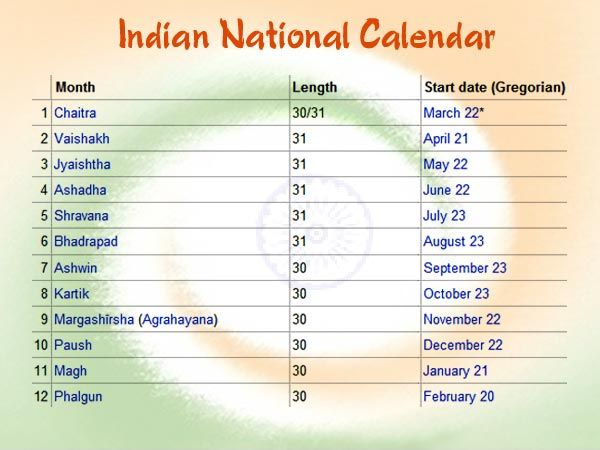5 Fascinating Facts About the National Calendar of India That Will Surprise You
India, a country of immense cultural and historical richness, has many symbols and systems that unify its people. One such symbol is the National Calendar of India, also known as the Saka Calendar. While the Gregorian calendar is used internationally, the Saka Calendar holds official importance in India, reflecting the country’s heritage and diversity. In this article, we explore the history, facts, timeline, significance, FAQs, and societal impact of the National Calendar of India.
- History of the National Calendar of India
- Interesting Facts About the National Calendar
- Timeline of Key Events Related to the National Calendar
- Significance of the National Calendar
- FAQs About the National Calendar of India
- Impact on Daily Life
- Observance and Wishing
- Conclusion: Why the National Calendar Matters
History of the National Calendar of India
The National Calendar of India, popularly known as the Saka Calendar, was introduced in 1957 by the Government of India. Its main purpose was to create a unified, standardized calendar system for official use in government documents, newspapers, and communication.
The Saka Era itself dates back to 78 AD, a historical timeline used in many parts of India and Southeast Asia.
The calendar was officially adopted following recommendations from the Calendar Reform Committee, which sought to harmonize India’s diverse regional calendars with a single official system.
The National Calendar balances astronomical precision with cultural relevance, making it both scientifically accurate and culturally significant.
Interesting Facts About the National Calendar
Dual Usage: India uses the Saka Calendar alongside the Gregorian calendar, with both appearing in official communications, newspapers, and government documents.
Structure: The Saka Calendar consists of 12 months, with the year starting on Chaitra 1, which usually falls on March 22 in the Gregorian calendar.
Months and Seasons: The months include Chaitra, Vaisakha, Jyaistha, Ashadha, Shravana, Bhadra, Ashwin, Kartika, Agrahayana, Pausha, Magha, and Phalguna, each reflecting seasonal cycles in India.
Leap Years: Similar to the Gregorian calendar, the Saka Calendar accounts for leap years, adding an extra day to Chaitra when needed.
Cultural Relevance: The calendar is closely linked with Hindu festivals, government events, and cultural observances, allowing India to maintain traditional and official timelines simultaneously.
Timeline of Key Events Related to the National Calendar
78 AD: The Saka Era begins, forming the historical basis of the calendar.
1952: Formation of the Calendar Reform Committee to create a standardized national calendar.
1957: Official adoption of the National Calendar of India (Saka Calendar).
1980s: Integration into government publications, gazettes, and media.
2000s: Widespread use in official and educational contexts, promoting awareness.
2020s: Digital adoption ensures calendars are visible in apps, websites, and government portals.
Significance of the National Calendar
The National Calendar of India is important for multiple reasons:
Administrative Utility: Provides a uniform system for government notifications, official records, and events.
Cultural Importance: Aligns with India’s traditional months and festivals, maintaining cultural continuity.
Educational Value: Teaches citizens and students about India’s astronomical knowledge and history.
Global Identity: While using the Gregorian calendar internationally, India maintains its own system, showcasing heritage and independence.
National Unity: Offers a single reference point for a country with hundreds of regional calendars and linguistic diversity.
FAQs About the National Calendar of India
Q1: Who created the National Calendar of India?
A1: The calendar was created by the Calendar Reform Committee, formed by the Government of India in the early 1950s.
Q2: When is the New Year according to the Saka Calendar?
A2: The New Year begins on Chaitra 1, which usually falls on March 22 (or March 21 in leap years) in the Gregorian calendar.
Q3: How many months are in the Saka Calendar?
A3: The calendar has 12 months, each reflecting India’s seasonal cycles.
Q4: Is the Saka Calendar used for festivals?
A4: Yes, it is often referenced alongside regional calendars to determine the dates of festivals, government holidays, and observances.
Q5: Why was the calendar needed in India?
A5: To provide a unified and standardized system that could coexist with regional calendars while ensuring administrative efficiency.
Impact on Daily Life
The National Calendar of India affects daily life in several ways:
Government and Administration: Used in official records, gazettes, and notifications, ensuring consistency across states and departments.
Education: Schools teach students about the Saka Calendar to preserve cultural heritage and scientific knowledge.
Media and Publications: Newspapers and magazines often print both Saka and Gregorian dates, helping citizens track traditional and modern timelines.
Festivals and Events: Aligns national and regional celebrations with official dates, helping in planning and observance.
Digital Integration: Calendar apps and government portals incorporate the Saka system for easy reference and awareness.
Observance and Wishing
While the Saka Calendar does not have a specific “National Calendar Day,” it is observed in educational programs, cultural discussions, and official communications.
Schools and universities often include lessons on the calendar’s history and importance.
Government offices and digital platforms display the calendar to promote awareness and respect for India’s heritage.
Citizens may use the calendar to plan festivals, anniversaries, and cultural events, keeping tradition alive.
Conclusion: Why the National Calendar Matters
The National Calendar of India (Saka Calendar) is not just a tool for marking days; it is a symbol of India’s heritage, scientific knowledge, and cultural identity. By combining historical tradition with modern administrative needs, it ensures that citizens remain connected to their roots while navigating contemporary life.
From schools to government offices, media, and digital platforms, the Saka Calendar impacts daily life positively, promoting awareness, unity, and respect for India’s diverse cultural landscape.
Understanding and using the National Calendar is a way to honor India’s history, celebrate its culture, and maintain a sense of national pride, making it a vital part of both individual and societal life.
Quick Recap: 5 Fascinating Facts About the National Calendar of India
Officially adopted in 1957.
Based on the Saka Era (78 AD).
Contains 12 months aligned with Indian seasonal cycles.
Used alongside the Gregorian calendar in official documents.
Balances cultural, educational, and administrative importance.








